Alita: Battle Angel (2019): A Cyberpunk Symphony of Heart and Steel
Picture a dystopian future where a cyborg girl with no memory awakens to a world of grit, wonder, and unrelenting action. Alita: Battle Angel (2019), directed by Robert Rodriguez and produced by James Cameron, plunges viewers into a visually stunning adaptation of Yukito Kishiro’s manga Gunnm (Battle Angel Alita). Starring Rosa Salazar in a motion-capture marvel, alongside Christoph Waltz, Jennifer Connelly, and Mahershala Ali, this film blends high-octane battles with a tender coming-of-age tale. Set in the sprawling, post-apocalyptic Iron City, Alita is a cinematic rollercoaster that fuses cutting-edge CGI with heartfelt storytelling, offering a fresh take on the sci-fi blockbuster. In this article, we’ll explore its electrifying plot, breathtaking visuals, standout performances, and the legacy it carves in the genre— proving why this underdog deserves more than a passing glance.
Awakening in Iron City: The Plot Unveiled
Alita: Battle Angel opens in the year 2563, centuries after “The Fall,” a cataclysmic war that left Earth in ruins. Above the chaotic slums of Iron City hovers Zalem, a utopian sky city inaccessible to the downtrodden below. Dr. Dyson Ido (Christoph Waltz), a compassionate cyber-surgeon, scavenges a junkyard and discovers the discarded core of a cyborg girl—her human brain intact, her body shattered. He rebuilds her, naming her Alita (Rosa Salazar) after his late daughter, and she awakens with no memory of her past, her wide, expressive eyes brimming with curiosity.
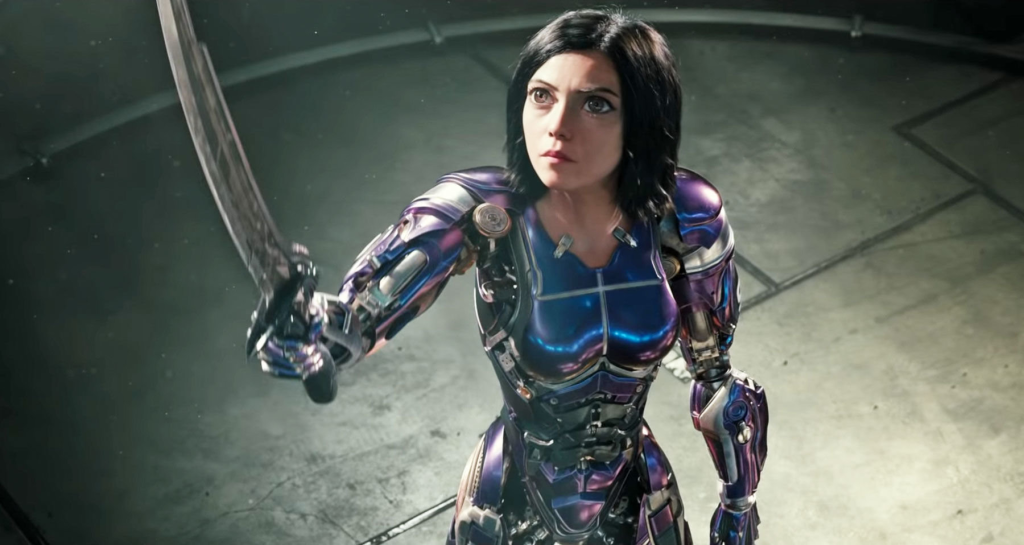
As Alita adjusts to her new life, she befriends Hugo (Keean Johnson), a scrappy dreamer who introduces her to Motorball, a brutal gladiatorial sport that captivates Iron City. But her idyllic exploration is short-lived. A confrontation with a monstrous cyborg killer, Grewishka (Jackie Earle Haley), triggers flashes of her forgotten combat skills, hinting at a warrior’s history. Alita’s quest for identity deepens when she learns her body is made of lost URM (United Republics of Mars) technology, a relic of the war that toppled civilizations.
Her journey pits her against a web of power players: Vector (Mahershala Ali), a cunning Motorball magnate; Chiren (Jennifer Connelly), Ido’s estranged ex-wife now aligned with Vector; and the unseen Nova, Zalem’s shadowy puppetmaster. As Alita uncovers her origins as a Berserker—a lethal URM soldier—she battles cyborg assassins, competes in Motorball, and fights to protect those she loves, all while chasing the dream of reaching Zalem. The climax sees her defy impossible odds, setting the stage for a sequel that, as of now, remains a fervent fan hope.
A Heroine Reborn: Themes of Identity and Resilience
At its core, Alita: Battle Angel is a story of self-discovery. Alita’s amnesia serves as a blank slate, allowing her to forge her identity through experience rather than memory. Her journey mirrors the classic hero’s arc, but with a cyberpunk twist—her “rebirth” is literal, her humanity intertwined with machine. This duality fuels the film’s emotional stakes, posing questions about what it means to be human in a world where flesh and metal blur.
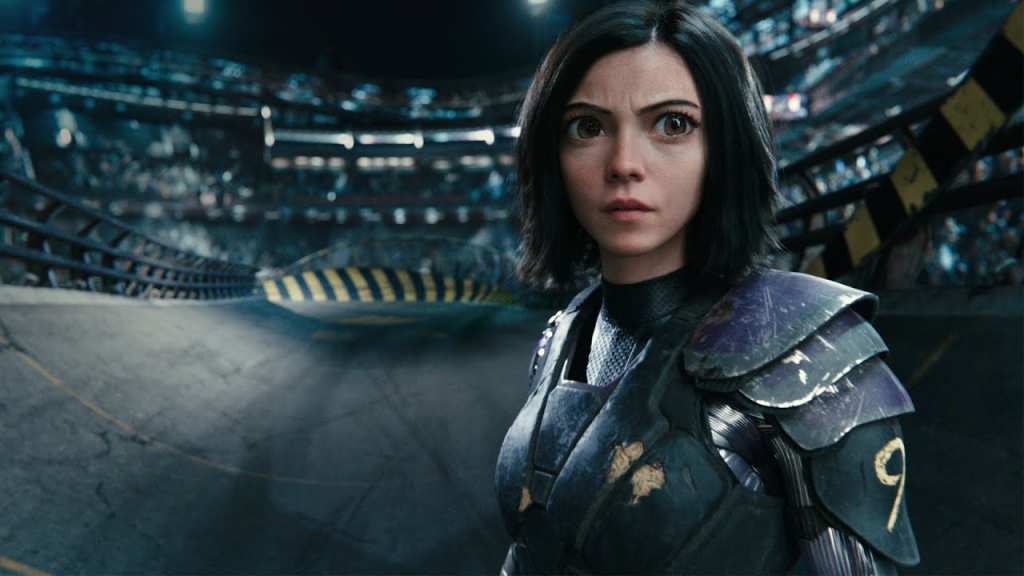
The film also tackles resilience and rebellion. Iron City’s oppressed masses, contrasted with Zalem’s aloof elite, paint a stark class divide that Alita instinctively challenges. Her refusal to bow to authority—whether it’s Vector’s schemes or Nova’s omnipotence—embodies a punk ethos that resonates with the manga’s spirit. Love, too, plays a pivotal role; her bond with Hugo, though criticized as rushed, underscores her capacity for connection, grounding her mechanical prowess in raw emotion.
Performances That Pack a Punch
Rosa Salazar’s portrayal of Alita is the film’s beating heart. Through motion-capture wizardry, she infuses the character with a blend of innocence and ferocity—her oversized eyes (a nod to manga aesthetics) convey wonder one moment, steely resolve the next. Salazar’s physicality shines in combat scenes, her movements fluid yet fierce, making Alita feel both alien and achingly human. Critics hailed her as a breakout star, her performance anchoring the film’s ambitious scope.
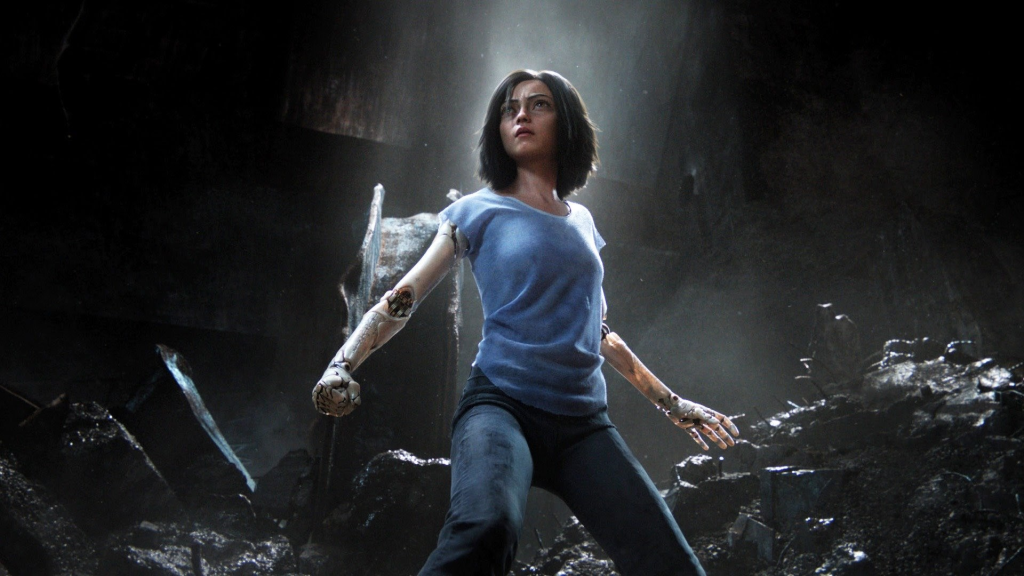
Christoph Waltz brings warmth and gravitas to Dr. Ido, a father figure haunted by loss yet driven by hope. His tender chemistry with Salazar grounds the story’s wilder elements. Jennifer Connelly’s Chiren is a tragic foil, her icy ambition masking a broken soul, while Mahershala Ali’s Vector exudes slick menace, though his screen time feels teasingly brief. Keean Johnson’s Hugo, while earnest, struggles to match the intensity of his co-stars, a minor weak link in an otherwise stellar cast.
Visual Spectacle: A Feast for the Eyes
Alita: Battle Angel is a technical triumph, its $170 million budget splashed across every frame. WETA Digital, the VFX powerhouse behind Avatar, crafts a world that’s equal parts gritty and grandiose. Iron City bursts with detail—rusted hovels, neon-lit markets, and towering scrap heaps—while Zalem looms as an ethereal mirage. The film’s 3D presentation, championed by Cameron, immerses viewers in its kinetic chaos, from Motorball’s breakneck races to Alita’s balletic fights.
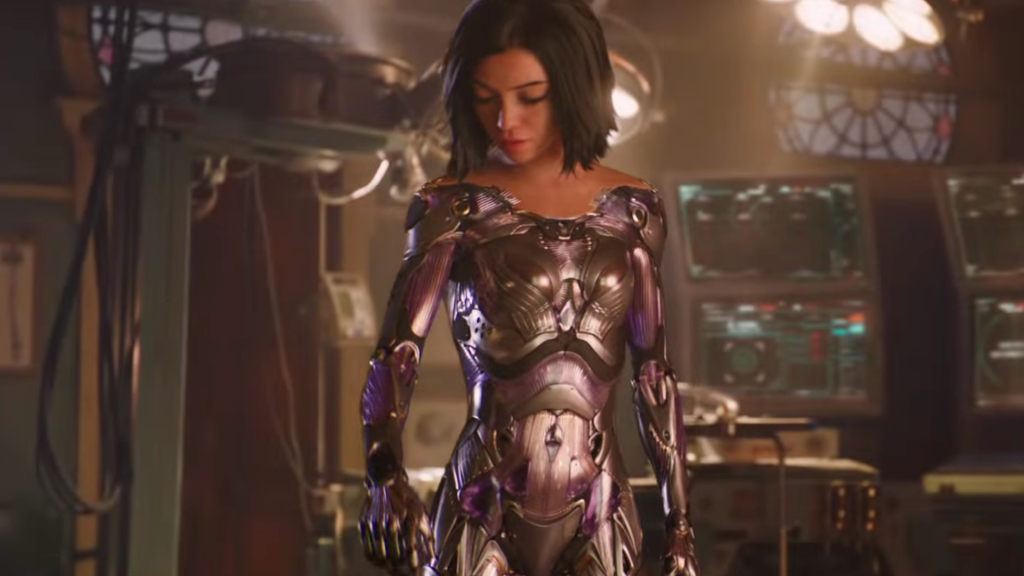
The action sequences are a highlight, choreographed with precision and flair. Alita’s battles—whether slicing through Grewishka’s claws or dodging Motorball foes—blend martial arts with cybernetic spectacle, each move a testament to Rodriguez’s genre savvy. The score by Tom Holkenborg (Junkie XL) pulses with industrial beats and soaring motifs, amplifying the film’s adrenaline and emotion.
From Page to Screen: A Manga Legacy
Adapting Gunnm was no small feat. Kishiro’s manga, serialized in the ’90s, is a sprawling saga of violence and philosophy, beloved for its dense lore. Cameron, a longtime fan, spent decades developing the project before handing the reins to Rodriguez, who streamlined it into a 122-minute origin story. Purists note omissions—like deeper URM history or Nova’s full reveal—but the film retains the manga’s soul: Alita’s indomitable spirit and the dystopian divide between haves and have-nots.
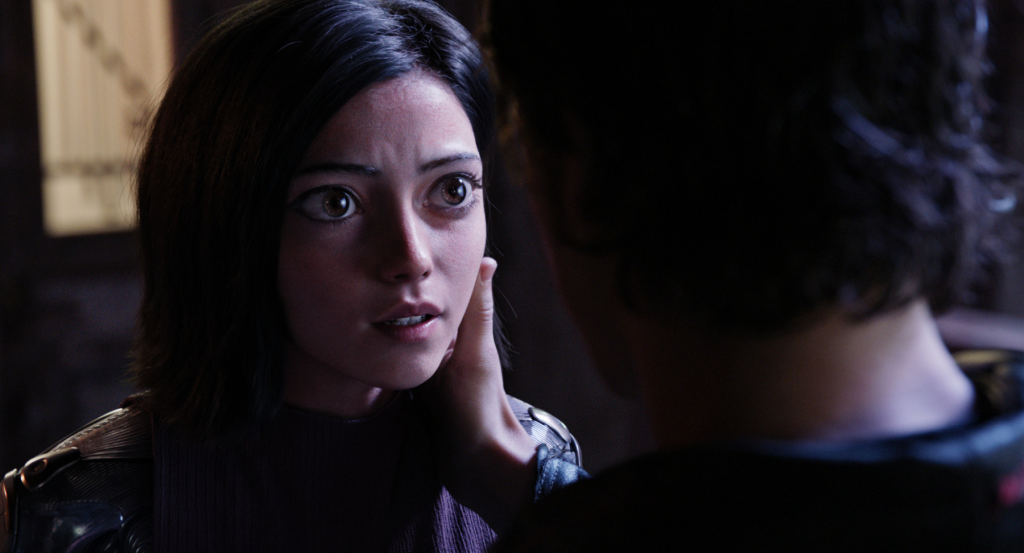
The result is a faithful yet accessible entry point, balancing fan service with broad appeal. Its cliffhanger ending, teasing Nova’s dominion, sparked a passionate #AlitaSequel campaign, though box office returns ($404 million worldwide) fell short of blockbuster expectations against its hefty cost. Still, its cult status grows, buoyed by streaming and home video success.
Why It Matters: A Sci-Fi Gem Worth Revisiting
Alita: Battle Angel isn’t flawless—its romance subplot falters, and its world-building leaves unanswered questions—but it’s a bold, beautiful anomaly in a sea of formulaic blockbusters. It dares to dream big, melding heart-pounding action with a heroine who’s equal parts steel and soul. Critics gave it a 61% on Rotten Tomatoes, praising its visuals and Salazar, while audiences embraced it with an 91% score, a testament to its visceral pull.
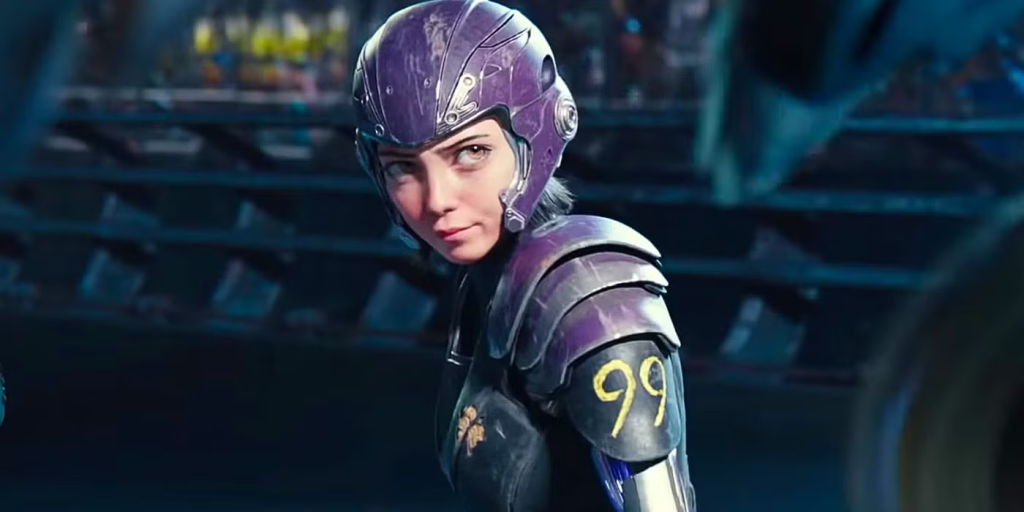
For sci-fi buffs, manga fans, or anyone craving a female-led epic, Alita delivers. It’s a love letter to resilience, a visual marvel, and a reminder that even in a broken world, one spark can ignite change. Whether you’re drawn by its spectacle or its heart, this battle angel’s journey is one worth taking.
Thank you for joining me on this deep dive into Alita: Battle Angel! If you loved this exploration, I’d be thrilled if you checked out my other film reviews and articles—there’s a whole universe of stories waiting. Share your thoughts on Alita below, and let me know what cinematic adventure you’d like me to tackle next. Happy watching!
